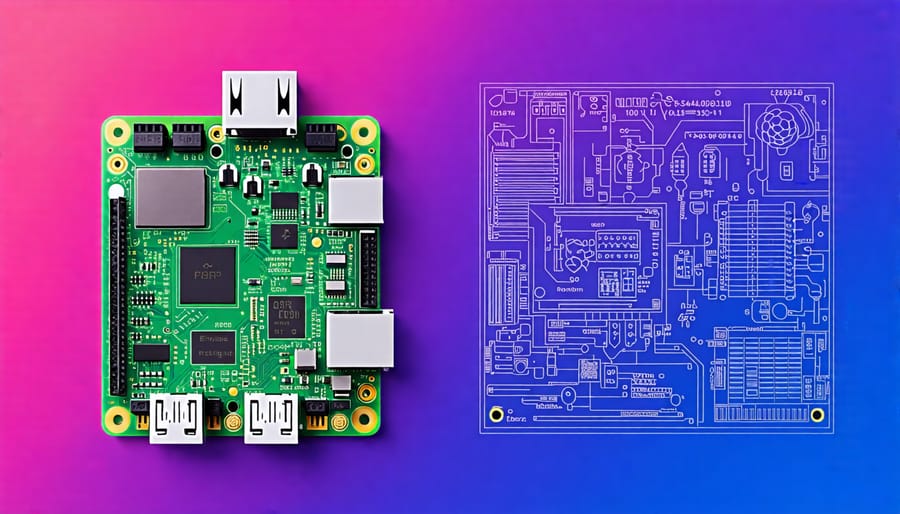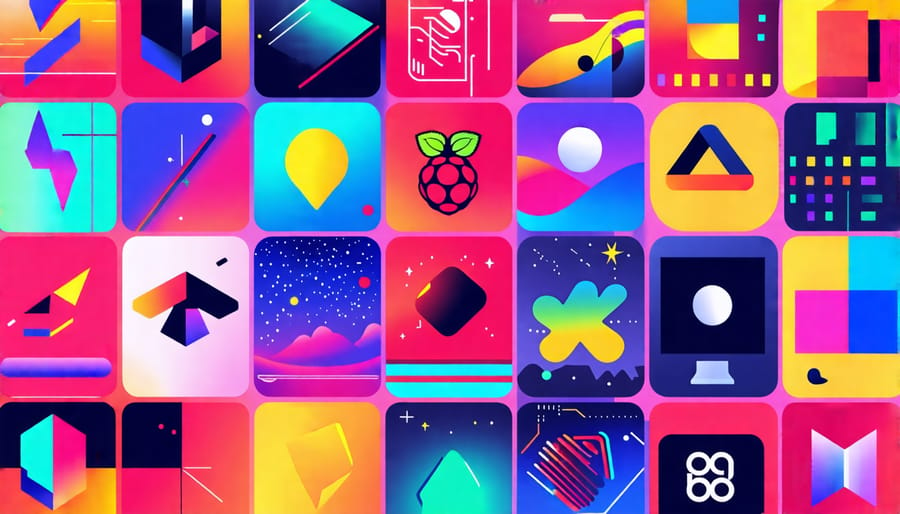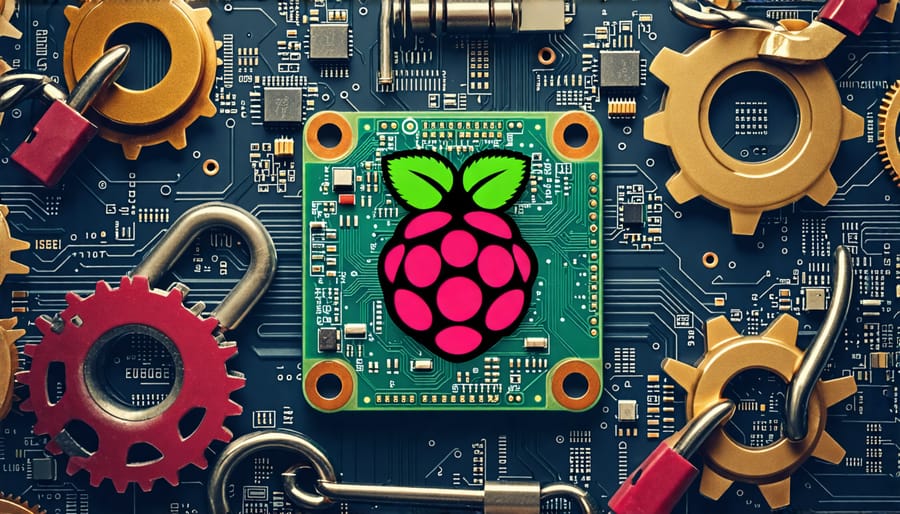Discover the nuances of Raspberry Pi’s open source nature and how it compares to other single-board computers. While the Raspberry Pi OS and most software running on the Pi are open source, the hardware schematics and certain proprietary components are not fully open. Despite this, Pi remains a popular choice for building your own Raspberry Pi projects and learning about coding and electronics. This article dives deep into the open source aspects of both Pi hardware and software, compares it to fully open source alternatives like the BeagleBone Black, and helps you decide if Raspberry Pi aligns with your open source goals and principles.
What Does Open Source Really Mean?
The Four Essential Freedoms
The Raspberry Pi operating system, Raspberry Pi OS, adheres to the four essential freedoms that define free software according to the Free Software Foundation. These freedoms are: the freedom to run the program as you wish, the freedom to study how the program works and change it, the freedom to redistribute copies, and the freedom to distribute copies of your modified versions. By embracing these freedoms, the Raspberry Pi Foundation ensures that users have complete control over their devices and can customize, modify, and distribute the software as needed. This commitment to open source principles sets Raspberry Pi apart from proprietary alternatives and fosters a vibrant community of developers and enthusiasts who collaborate, innovate, and share their creations freely.

Open Source Hardware vs Software
Open source software refers to programs with publicly available source code that can be modified and distributed freely. In contrast, open source hardware involves sharing design files, schematics, and documentation, allowing anyone to study, modify, and manufacture the physical components. While Raspberry Pi’s software, including the Raspbian operating system, is open source, the hardware is not entirely open source. The Pi’s board schematics are available, but some components, like the Broadcom SoC, use closed-source technology. This differs from fully open source single-board computers like the BeagleBoard, which release all hardware designs. However, the Raspberry Pi strikes a balance by providing affordable, accessible hardware with extensive open source software support, fostering a vibrant community of makers and developers who collaborate on innovative projects.
Examining Raspberry Pi’s Open Source Bonafides
Raspbian and Other OSes
Raspbian, now known as Raspberry Pi OS, is the official operating system for Raspberry Pi devices. Built on top of the open source Debian Linux distribution, Raspberry Pi’s official OS provides a stable and user-friendly environment tailored for the Pi’s hardware. While not entirely open source due to the inclusion of proprietary firmware blobs, the majority of the OS is open and transparent.
In addition to Raspbian, several other open source operating systems are compatible with Raspberry Pi, offering users a variety of options to suit their needs and preferences. These include popular Linux distributions like Ubuntu, Fedora, and Arch Linux ARM, as well as more specialized OSes like LibreELEC for media center purposes and RISC OS, a non-Linux OS originally designed for ARM-based computers.
The openness of these operating systems allows users to customize and modify their Raspberry Pi experience, contributing to the thriving community of developers and enthusiasts who share their projects and innovations. With access to the source code, users can audit the software for security, optimize performance, and adapt the OS to their specific requirements, embodying the spirit of open source development that has made Raspberry Pi so popular among hobbyists and educators alike.

Digging into the Hardware
While the Raspberry Pi’s software is largely open source, the hardware schematics and design are partially closed. The Broadcom SoC (System on a Chip) at the heart of the Pi is proprietary, with closed-source drivers and firmware. However, the Pi Foundation does release schematics, datasheets, and mechanical drawings for the board itself and many accessories.
This allows users to understand how the components connect and interact, enabling them to design custom hardware add-ons. The open schematics have facilitated the creation of numerous Pi-based projects and products. Yet, unlike fully open source hardware such as the Arduino, you couldn’t manufacture a complete Raspberry Pi clone using the published information alone.
Some components, like the Broadcom SoC and the Raspberry Pi PoE HAT, have closed designs. So while tinkerers can build upon the Pi’s hardware, they don’t have full transparency into every part. It’s a trade-off that allows the Pi to offer impressive specs at a low cost by leveraging some proprietary chips and designs. For many users, this is an acceptable compromise. But those seeking a single-board computer with fully open hardware may prefer options like the BeagleBoard or RISC-V based boards.
The Raspberry Pi Foundation’s Stance
The Raspberry Pi Foundation, the non-profit organization behind the popular single-board computer, has consistently emphasized its commitment to open source principles. While not every aspect of Raspberry Pi is open source, the Foundation actively supports and contributes to the open source community.
The official Raspberry Pi OS, formerly known as Raspbian, is built on the open source Debian Linux distribution. The source code for the operating system is freely available, allowing users to modify and redistribute it. Additionally, the Foundation encourages the use of open source software on Raspberry Pi, with pre-installed applications like Python, Scratch, and Minecraft Pi Edition.
When it comes to hardware, the Raspberry Pi Foundation releases schematics, board designs, and other technical information for most Pi models. This openness enables enthusiasts to understand and build upon the hardware. However, certain components, such as the Broadcom SoC (System on a Chip), include closed-source elements due to licensing restrictions.
The Foundation also actively engages with the open source community through various initiatives. They maintain public repositories on GitHub, participate in open source events, and support educational programs that promote open source learning. While not 100% open source, the Raspberry Pi Foundation’s stance and actions demonstrate a strong commitment to open source values, making Raspberry Pi a compelling choice for many open source enthusiasts.

Comparing Raspberry Pi to Other SBCs
Arduino
Arduino is another popular open-source hardware platform that shares many similarities with Raspberry Pi in terms of its commitment to openness and accessibility. Both platforms provide users with the freedom to modify and customize the hardware and software according to their needs. However, while Raspberry Pi offers a more comprehensive single-board computer solution, Arduino focuses primarily on microcontrollers and is designed for simpler, more targeted projects. Arduino’s hardware designs and software are released under open-source licenses, ensuring that users have full access to the underlying technology. This openness has fostered a vibrant community of developers and enthusiasts who contribute to the platform’s growth by sharing their projects, libraries, and expertise. The Arduino IDE (Integrated Development Environment) is also open-source, allowing users to easily write, modify, and upload code to their Arduino boards. While Arduino and Raspberry Pi cater to different project requirements, they both exemplify the power and potential of open-source technology in enabling innovation and creativity.
BeagleBoard and Others
While Raspberry Pi is a popular choice for open source enthusiasts, it’s not the only single-board computer (SBC) available. BeagleBoard, another well-known SBC, offers a fully open source hardware design and supports various open source software distributions. This makes BeagleBoard an attractive option for those who prioritize complete transparency and the ability to modify both hardware and software components.
Other notable open source SBCs include ODROID, PINE64, and Libre Computer. These boards often feature more powerful processors, additional connectivity options, or specialized features that cater to specific use cases. However, they may not have the same level of community support and resources as Raspberry Pi, which has a vast ecosystem of projects, tutorials, and forums.
When comparing Raspberry Pi to these alternatives, it’s essential to consider factors such as performance, price, available software support, and the specific requirements of your project. While Raspberry Pi strikes a balance between affordability, ease-of-use, and versatility, other open source SBCs may be more suitable for advanced users or niche applications.
Conclusion
In conclusion, while Raspberry Pi is not 100% open source due to some closed-source components like the VideoCore GPU, it still embodies the spirit of open source through its commitment to transparency, collaboration, and accessibility. The vast majority of Raspberry Pi’s hardware designs and software are freely available for anyone to study, modify, and distribute, making it an invaluable tool for learning, experimentation, and innovation.
The Raspberry Pi Foundation’s dedication to providing affordable, user-friendly single-board computers has revolutionized the world of computing, empowering countless individuals to explore technology and bring their ideas to life. From hobbyists and students to educators and professionals, the Raspberry Pi community is a testament to the power of open source principles in fostering creativity, knowledge-sharing, and problem-solving.
As we’ve seen, even with its partially closed-source nature, Raspberry Pi offers unparalleled value and accessibility compared to other single-board computers on the market. Its extensive ecosystem of resources, tutorials, and community support makes it an ideal platform for anyone looking to dive into the world of open source computing.
So while Raspberry Pi may not be the perfect embodiment of open source, it remains a shining example of how open source principles can be leveraged to create a product that is both powerful and accessible, empowering users to learn, create, and innovate in ways that were once only possible with much more expensive and proprietary systems.


